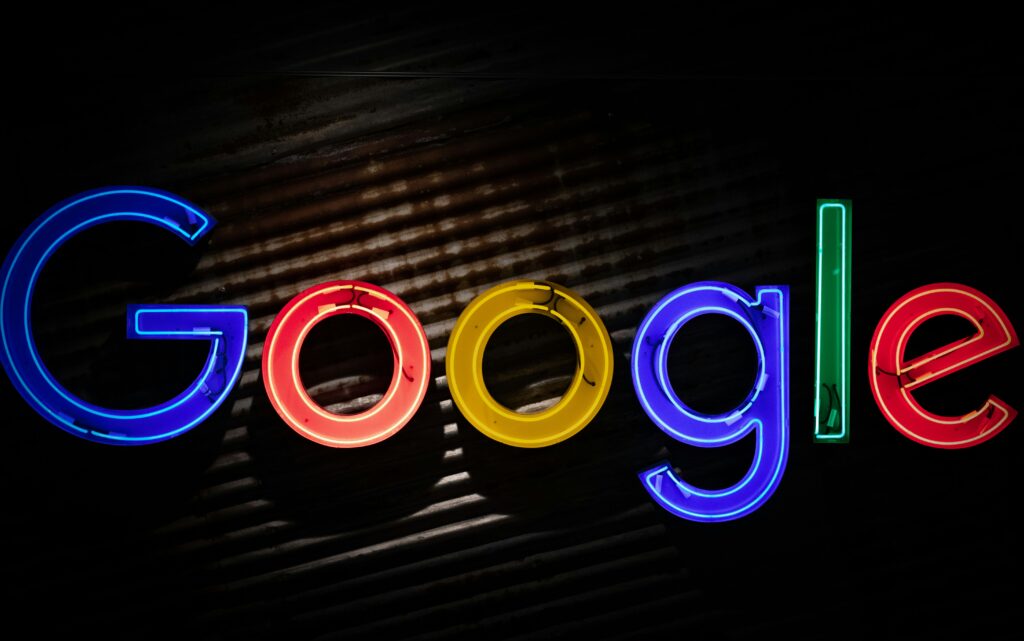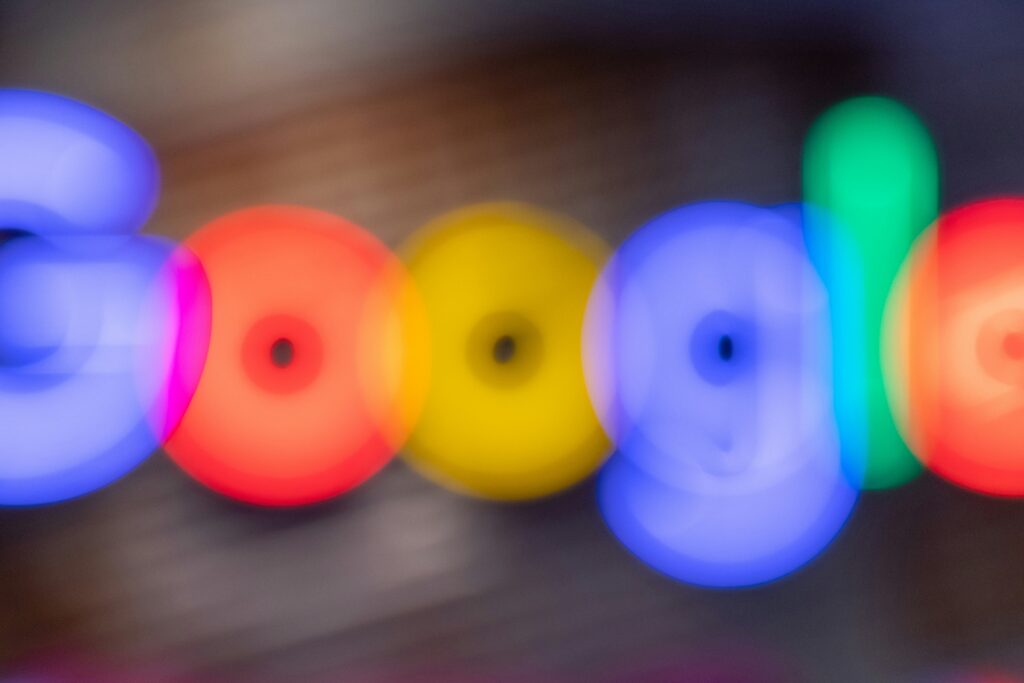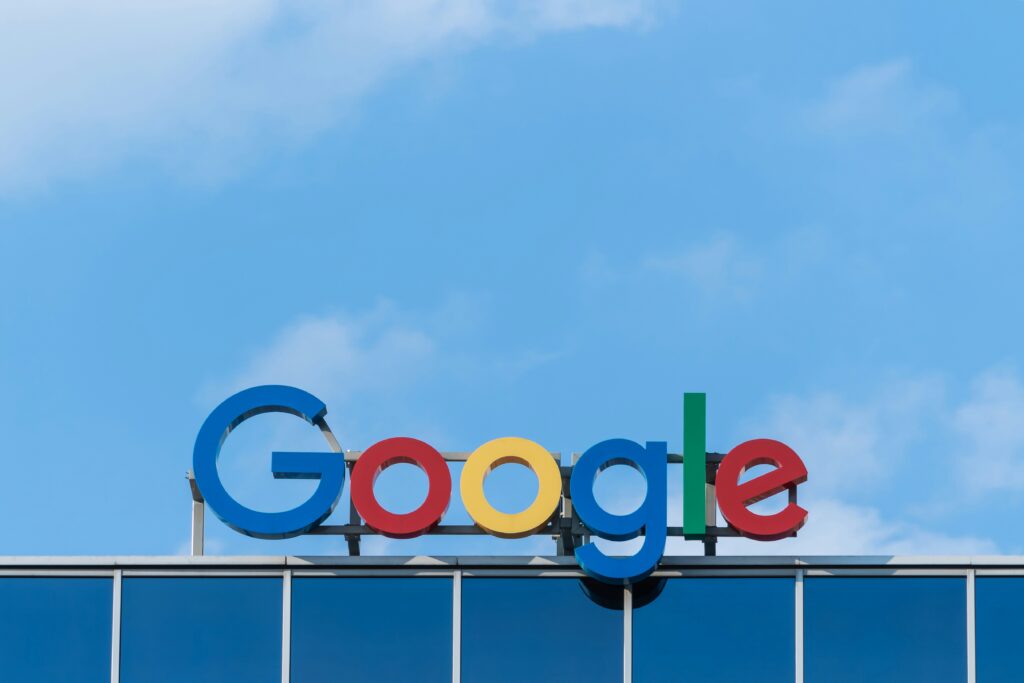Google Logo: Meaning, History, Design Influences, and Evolution

In today’s digital age, there are few logos that can match the ubiquity and recognizability of the Google logo. As a symbol that appears on our screens countless times each day, it’s easy to take it for granted. However, if we delve a little deeper, we discover a fascinating story of meaning, history, design influences, and evolution. In this article, we will explore the Google logo and its significance in the world of branding and design.
Understanding the Google Logo
Before we dive into the specifics of the Google logo, let’s take a moment to understand its significance. A logo serves as the visual representation of a brand, and in the case of Google, it embodies the company’s values, mission, and vision. It is the face of the search engine giant, and its impact extends far beyond a simple graphic on a webpage.

Delving deeper into the world of logo design, it’s fascinating to note that a well-crafted logo can evoke emotions, build brand recognition, and communicate a company’s identity in a single glance. The Google logo, with its iconic colors and playful typography, achieves all this and more. It has become a symbol of innovation and reliability in the digital age, instantly recognizable to billions of users worldwide.
The Meaning Behind the Google Logo
Every design decision in the Google logo is intentional and carries a meaning. The logo is a masterful blend of simplicity and playfulness, reflecting Google’s core philosophy. The use of primary colors, in particular, speaks to the company’s passion for accessibility and inclusivity. The varying shapes of the letters evoke a sense of movement and innovation, symbolizing Google’s relentless drive for progress.
Furthermore, the font choice in the Google logo is not arbitrary. The clean, sans-serif typeface conveys a sense of modernity and clarity, aligning perfectly with Google’s commitment to organizing the world’s information and making it universally accessible and useful. This attention to detail in typography showcases the meticulous thought process that goes into every aspect of Google’s branding.
The History of the Google Logo
The Google logo has undergone several transformations since the company’s inception. The original logo, designed in 1998, featured a playful and slightly quirky font. Over the years, the logo evolved to become cleaner and more refined, while still maintaining its distinctive charm. Each iteration was carefully crafted to reflect Google’s growth and evolution as a company.
As Google expanded its range of products and services, the logo adapted to represent this diversification while staying true to its roots. The evolution of the logo mirrors Google’s journey from a humble search engine to a tech powerhouse offering a wide array of innovative solutions. Through each redesign, the Google logo has remained a constant beacon of creativity and forward-thinking, embodying the spirit of a company that continues to shape the digital landscape.
Influences on the Google Logo Design
The design of the Google logo did not happen in a vacuum. It was influenced by a wide range of factors, including initial design concepts and cultural and technological trends at the time.
Initial Design Concepts
When Google was in its infancy, the logo design process involved exploring various concepts and ideas. The designers experimented with different fonts, shapes, and color schemes to find the perfect expression of Google’s identity. It was a journey of trial and error that eventually led to the iconic logo we know today.
Cultural and Technological Influences
The Google logo has always been influenced by the world around it. As technology advanced and the internet became more integrated into our daily lives, the logo had to adapt. The rise of mobile devices, for example, prompted a redesign that would ensure optimal visibility and legibility on smaller screens. Similarly, changing design trends and cultural shifts influenced the logo’s evolution, allowing Google to stay relevant and resonate with its global audience.
The Evolution of the Google Logo
Over the years, the Google logo has undergone significant changes and revisions. These transformations not only reflect the evolution of design trends but also serve as a visual representation of Google’s growth as a company.

Major Changes and Revisions
One of the most notable changes in the Google logo’s evolution occurred in 2015 when the company introduced a new, flatter design. The letters were streamlined and refined, creating a cleaner and more modern look. This change marked a shift towards simplicity and clarity, aligning with the minimalist design aesthetic that was gaining popularity at the time.
The Logo in the Modern Era
In the modern era, the Google logo continues to be a dynamic and adaptable symbol. It seamlessly transitions between different contexts and platforms, ensuring a consistent brand experience across all touchpoints. It’s not just a static logo; it’s a living, breathing representation of Google’s ever-evolving identity.
The Impact of Google’s Logo
The Google logo has had a profound impact on both the brand’s recognition and the wider design community. Let’s explore two key aspects of its influence.
Brand Recognition and Perception
The Google logo is instantly recognizable, even to those who may not be familiar with the company’s full range of services. It has become synonymous with innovation, reliability, and the pursuit of knowledge. The logo’s simplicity and memorability have contributed to making Google one of the most trusted and respected brands in the world.
Influence on Other Corporate Logos
The success of the Google logo has not gone unnoticed by other companies. Its bold use of colors, playful typography, and adaptability have inspired countless other corporate logos. This influence extends beyond just the tech industry, with companies from various sectors adopting elements of the Google logo’s design principles in their own branding efforts.

The Future of the Google Logo
As we look ahead, it’s only natural to wonder what the future holds for the Google logo. While we can’t predict the specifics, we can speculate on the role the logo will play in Google’s brand strategy.
Predictions and Speculations
Given Google’s track record of innovation, it’s safe to assume that the logo will continue to evolve. As technology advances, new design possibilities will emerge, allowing Google to push the boundaries of creativity even further. It will be exciting to witness how the logo adapts to new mediums, such as augmented reality and voice interfaces.
The Role of Logo in Google’s Brand Strategy
The Google logo will always be a key element of the company’s brand strategy. It will continue to represent Google’s values, capture its spirit of innovation, and leave a lasting impression on users worldwide. As Google expands into new ventures and industries, the logo will serve as a familiar anchor, reminding us of the company’s roots and its unwavering commitment to excellence.
In conclusion, the Google logo is much more than just a collection of colorful letters. It is a symbol of a company that started with a simple goal – to organize the world’s information – but has since grown into a global phenomenon. As we continue to navigate the digital landscape, let’s not forget to appreciate the thought and craftsmanship that went into creating one of the most beloved and iconic logos of our time.
Inspired by the evolution and significance of the Google logo? Your brand deserves a logo that captures its unique spirit and values just as effectively. Meet Boon, the innovative software that harnesses the power of Artificial Intelligence to transform your logo design preferences into a custom logo that resonates with your audience. Whether you’re in tech, retail, or any industry in between, Boon makes it effortless to engage users, tell compelling stories, and bolster your business. Ready to create a logo that stands the test of time? Let’s make a logo!
